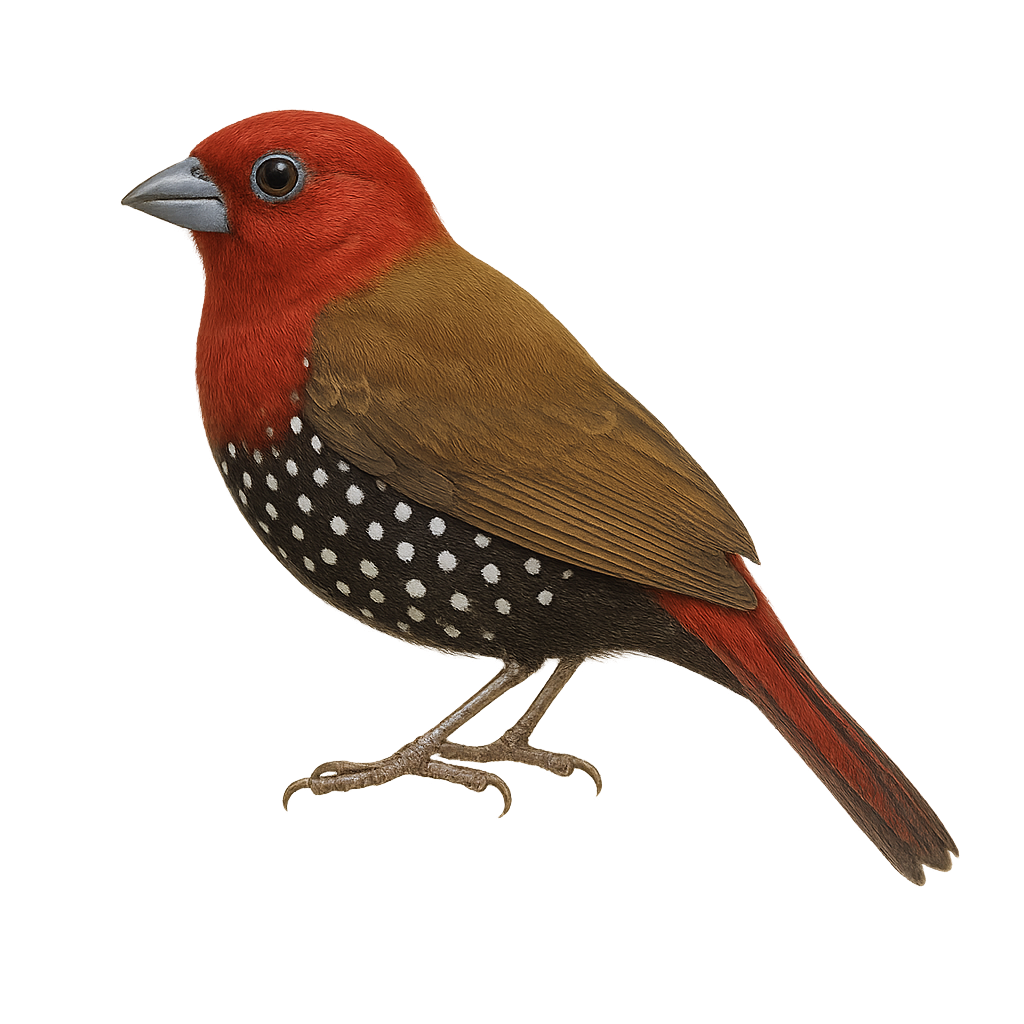Your wildlife photography guide.
Explore the pink-throated twinspot in detail, study its behavior, prepare your shots.
Where to observe and photograph the pink-throated twinspot in the wild
Learn where and when to spot the pink-throated twinspot in the wild, how to identify the species based on distinctive features, and what natural environments it inhabits. The WildlifePhotographer app offers tailored photography tips that reflect the pink-throated twinspot’s behavior, helping you capture better wildlife images. Explore the full species profile for key information including description, habitat, active periods, and approach techniques.
Pink-throated Twinspot
Scientific name: Hypargos niveoguttatus

IUCN Status: Least concern
Family: ESTRILDIDAE
Group: Birds
Sensitivity to human approach: Suspicious
Minimum approach distance: 5 m
Courtship display: February to March
Incubation: 12-14 jours
Hatchings: February to April
Habitat:
Savannas, open forests, shrublands
Activity period :
Primarily active during the day, with peak activity in the morning and late afternoon.
Identification and description:
The Pink-throated Twinspot is a small bird with distinctive plumage, primarily brown with characteristic white spots on its flanks. The male has a pink throat, while the female displays more subdued colors. This bird is endemic to East Africa, where it inhabits savannas, open forests, and shrublands. It feeds mainly on seeds but also consumes insects. Its song is soft and melodious, often heard at dawn and dusk. Although discreet, it is sometimes observed in small groups, especially outside the breeding season. The species is currently considered of least concern by the IUCN but is sensitive to habitat degradation.
Recommended lens:
400 mm – adjust based on distance, desired framing (portrait or habitat), and approach conditions.
Photography tips:
To photograph the Pink-throated Twinspot, it is advisable to use a telephoto lens of at least 400mm to capture detailed images without disturbing the bird. Look for it in savannas or open forests, especially early in the morning or late afternoon when the light is soft and flattering. Be patient and discreet, as this bird can be suspicious. Use a tripod to stabilize your camera and achieve sharp shots. Opt for a natural background to highlight the subtle colors of its plumage.
The WildlifePhotographer App is coming soon!
Be the first to explore the best nature spots, track rutting seasons, log your observations, and observe more wildlife.
Already 1 430 wildlife lovers subscribed worldwide

